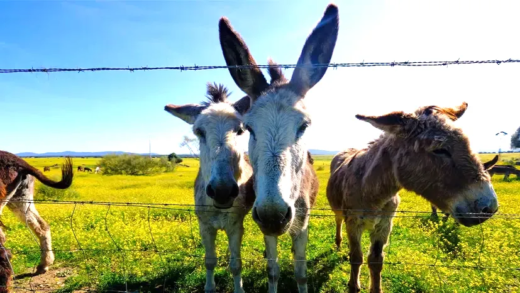Coyotes are adaptable canines that can pose risks to pets, especially small dogs and cats. They are most active during dawn and dusk, and understanding their behavior is crucial for pet safety. Common myths about coyotes can lead to misconceptions, while factors like food availability and urbanization increase attack risks. Knowing how to respond to a coyote sighting, protecting pets with effective strategies, and acting quickly if a pet goes missing are essential for pet owners.
What is a Coyote?
Coyote behavior is fascinating and often misunderstood. Coyotes are adaptable canines native to North America, thriving in diverse habitats, from deserts to forests and even urban areas. They play a critical role in the ecosystem by controlling rodent populations and maintaining the balance of their environment. Understanding their behavior helps pet owners take necessary precautions.
Coyote Activity Times
Coyotes are primarily crepuscular, meaning they are most active during dawn and dusk. This is crucial information for pet owners. During these times, pets should be kept indoors or supervised closely. Knowing the active hours of coyotes can significantly reduce the risk of coyote attacks on pets. It’s essential to be aware of their patterns to protect your furry friends.
Common Myths About Coyotes
Several misconceptions surround coyotes, leading to unnecessary fear. One common myth is that coyotes only hunt in packs. In reality, they can hunt alone or in pairs, making them versatile predators. Another myth is that coyotes are only a threat to large pets; however, small dogs and cats are often at risk too. Educating ourselves about these myths is vital for understanding coyote behavior and ensuring the safety of our pets.
Factors Increasing Coyote Attacks
Coyote attacks on pets can often be attributed to several factors. Understanding these factors is crucial for pet owners who want to protect their furry friends. Here are some key elements that can increase the likelihood of coyote encounters:
- Food Availability: Coyotes are opportunistic feeders. If your neighborhood has easy access to food sources, such as pet food left outside, garbage, or small animals, coyotes are more likely to roam nearby.
- Habitat Alteration: Urbanization and habitat destruction force coyotes into closer proximity with humans. Suburban areas with parks and open spaces can attract coyotes looking for new territories.
- Seasonal Breeding: During mating season, coyotes may become more aggressive in defending their territory, leading to increased interactions with pets.
- Pet Size: Small pets, such as cats and small dogs, are more vulnerable to coyote attacks. Their size makes them easier targets.
By recognizing these factors, pet owners can take proactive measures to reduce the risk of coyote attacks on pets.
Coyote Hunting Habits
Coyote hunting habits reveal a lot about their behavior. Coyotes can hunt both alone and in packs, which makes them versatile predators. Their hunting strategies often depend on the availability of prey and environmental conditions. Here are some insights into their hunting habits:
- Solitary Hunting: When food is scarce, coyotes may hunt alone. This is common in areas where they have to rely on smaller prey.
- Pack Hunting: In contrast, when hunting larger prey or during breeding season, coyotes often work in packs. This increases their chances of a successful hunt.
- Stalking Techniques: Coyotes are known for their stealth. They often stalk their prey quietly, using cover to get as close as possible before pouncing.
Understanding these habits can help pet owners recognize the potential threats coyotes pose to their pets.
Preferred Pet Breeds for Coyotes
Not all pets are equally at risk from coyotes. Some breeds are more likely to attract coyote attention due to their size and behavior. Here’s a look at the preferred pet breeds for coyotes:
- Small Dogs: Breeds like Chihuahuas, Yorkies, and Dachshunds are particularly vulnerable. Their size makes them easy targets.
- Cats: Outdoor cats are highly at risk. Coyotes often view them as prey, especially in areas where their natural food sources are limited.
- Unsupervised Pets: Regardless of breed, pets left unattended in yards are at risk. Coyotes often take advantage of easy opportunities.
Pet owners should be particularly vigilant with these breeds to keep them safe from potential coyote encounters.
What to Do If You See a Coyote
If you encounter a coyote, it’s essential to know the right actions to take. First, remain calm. Coyotes are generally wary of humans and may not approach if they sense your presence. Here’s what to do:
- Make Yourself Big: Raise your arms, wave them, and shout. This can deter the coyote.
- Do Not Run: Running may trigger a chase response. Stand your ground and back away slowly.
- Use Noise: Clap your hands or use a whistle to scare the coyote away.
- Secure Pets: If you have pets with you, pick them up or keep them close.
By following these steps, you can safely navigate a coyote sighting and reduce the risk of an incident.
Keeping Your Pets Safe from Coyotes
Protecting your pets from coyotes requires proactive measures. Here are practical tips:
- Supervise Outdoor Time: Always keep an eye on your pets when they’re outside, especially during dawn and dusk.
- Secure Your Yard: Fencing should be at least six feet high and buried underground to prevent digging.
- Remove Food Sources: Don’t leave pet food outside and secure garbage bins to minimize attracting coyotes.
- Use Coyote Deterrents: Motion-activated lights and sound devices can help keep coyotes at bay.
Implementing these strategies significantly lowers the risk of coyote encounters with your pets.
Missing Pet Coyote Concerns
If your pet goes missing, particularly in areas known for coyote activity, it’s vital to act quickly. Here’s what to do:
- Search the Area: Look in nearby bushes, under decks, or anywhere your pet might hide.
- Alert Neighbors: Inform your neighbors and ask them to keep an eye out.
- Check Local Shelters: Visit local animal shelters and post flyers with your pet’s photo.
- Contact Animal Control: Report your missing pet to local animal control agencies.
Being proactive in these situations can help reunite you with your beloved pet more quickly.





Comments are closed.